by Jasmine | Mar 15, 2015 | Alternative Health, Prenatal Yoga, Yoga Health
The best yoga positions to aid fertility have a few key things in common:
-Increase Circulation to the Reproductive Organs
-Balance Hormones
-Reduce Stress
You made have already heard that inversions like headstand and shoulder stand are powerful natural fertility aids. Those positions didn’t make our list for one simple reason: they should be done with proper supervision. These poses made our list of the five best yoga positions to aid fertility because they don’t need supervision. In fact, they can be done in the safety and privacy of your home with no risk.
Yoga For Reproduction….Flexing, Floating and Baby-making
1. Baddha Konasana – Butterfly
According to B.K.S. Iyengar this pose is a blessing to women. It stimulates the abdominals and ovaries.Sit comfortably on a rug or yoga mat. Draw your heels together in front of your pubic bone, allowing your knees to open outward. *If your knees won’t open fully, this just means your pelvis isn’t open yet. For your comfort, you can sit on a blanket or firm pillow to elevate your hips, this will help.
Close your eyes a moment and tune into your breath. Soften your belly and allow your inhale to fill the space between your belly button and pubic bone, as if you could breathe into your womb. As you exhale draw the belly gently in toward the low back, massaging your internal organs.Press your feet firmly together to allow your inner groins to stretch as you elongate the spine up and out of the hips. Stay here a few breaths.As you breathe, your body will soften into the pose. If you feel you can lean forward without collapsing the lower back, extend forward over your heels reaching up through the crown of the head.Hold onto your feet with your hands, and gently press your knees toward the floor with your elbows. Breathe into the sensation in your hips. Keep your shoulders and face soft.
This pose helps to open the hips and increases circulation in the pelvis, it has been known to help balance irregular menstruation and helps the ovaries to function properly.
2. Upavistha Konasana – Seated Wide Legged Angle Pose
This pose stretches the hamstrings and helps the blood to circulate properly in the pelvic region and keeps it healthy.
Sit on your mat or rug, and open your legs wide. If your legs won’t open fully, this just means your pelvis or hamstrings aren’t open yet. For your comfort, you can sit on a blanket or firm pillow to elevate your hips.
Flex your feet back toward your face and make sure your feet are straight up and down, perpendicular to the floor. Lift up through your heart and extend your spine on an inhale. With a long spine, slowly walk your hands forward until you feel the first sensation in your groins and hamstrings. Stop here and breathe. Inhaling as if you could breathe into your womb, allowing the belly to soften and swell then exhale drawing your belly in. When you feel the body has opened, walk your fingers forward until your next edge of sensation. Stop and breathe, and then continue. Once you are fully extended , you can slowly rise, lead with the heart and gently shake out your legs.
This pose is beneficial because it helps regulate menstrual flow and also nourishes the ovaries. One of the wonderful benefits of Yoga is it teaches you to respect your process. Treat yourself gently as you approach these poses, knowing that mastery doesn’t occur overnight. Treat yourself just as gently as you proceed on your path toward parenthood. Accept and honor your limitations and don’t push past the point to where you are in pain or massive discomfort.
3. Viparita Karani – Legs Up The Wall
This pose is restorative and helps to calm the nervous system and the heart rate. It is powerful for women because of its inversion qualities and ability to focus on the reproductive organs.
Find space at a wall. You can use a blanket underneath your hips if you want. Lay on the floor and scoot your bottom as youwalk your legs up the wall until your hips are level and your back is on the floor. Put one hand on your belly and one hand on your heart or the arms can lay open, creating space in the heart. This pose is about receiving and surrendering. Let your breath be soft and deep, allow your mind to quiet and surrender to the pose. You will feel the circulation in your body shift. Imagine a waterfall starting at your legs, pooling at the hips and slowly spilling down into the heart and the brain. This visual will follow the natural flow of energy as it cultivates a calm nervous system. This pose can be done while you’re menstruating as long as the hips are level. This pose has great healing qualities and is a gem for women. It is a great pose for insomnia, anxiety and jet lag as well.
What are your thought about yoga poses for fertility? Which ones do you think are the best and worst?
by Jasmine | Nov 18, 2014 | Alternative Health, Partner Yoga, Prenatal Yoga
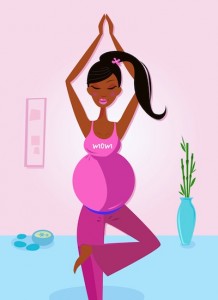
WHY PRENATAL YOGA?
Pregnancy is a great time to learn how to emotionally, spiritually and physically release, open up and let go. Yoga also help you find the time and space to look within yourself, allowing you to openly explore your own intrinsic knowledge about the cycles of life.
Yoga is a comprehensive and safe form of exercise during pregnancy and postpartum. Prenatal Yoga Classes are taught by highly qualified staff trained in Yoga Alliance Certified guidelines, methods and practices. Our yoga practice is gentle and nurturing, yet safe and supportive, so that mother and baby obtain the maximum benefit from postures without any strain.
Prenatal yoga links postures and breathing exercises to create awareness of your own mind, body and spirit, and the spirit of your baby. Pregnancy Yoga is ideal preparation for giving birth. Our yoga program is taught in a way that will help you access your own intuitive understanding of birth while helping you to connect to your partner.
Breathing practice during pregnancy opens the chest and helps to improve circulation in both mother and baby, ensuring a better supply of oxygen to the blood. It also calms the nerves and gives the mother greater control of her breathing during labor.
CAUTIONS
Since nausea is common during the first trimester, it may be helpful to practice in a well-ventilated room. During the second trimester your growing belly will require modifying some poses. Use common sense and avoid putting undue pressure on the abdomen in poses like Head To Knee Postures, Seated Forward Fold, and Forward Bends Towards the Knee, as well as Seated Spinal Twists.
You may also choose to reduce the amount of vinyasa (flowing postures) if generating heat in the body makes you uncomfortable. The third trimester will require you to continue to adapt and even omit certain postures. Standing poses like Extended Triangle Pose, and Extended Side Angle Pose can help relieve back pain. A simple inversion such as Legs-Up-the-Wall-Pose can help to relieve swollen ankles. Some poses might require additional props or support (blocks, blankets, bolsters).
Through each trimester the most important thing is to tune in to what your body is telling you and alter your practice accordingly. During and after your pregnancy, try not to be attached to your previous abilities or level of flexibility.
Safety Guidelines
All pregnant women are welcome to attend the class, whether you have a regular practice or want to start yoga during pregnancy. It is very important to inform the teacher of any complications (current or past) or any treatment that you are receiving.
During pregnancy ligaments around the joints become loose and soft. Care should therefore be taken not to overstretch the body. The abdomen should remain relaxed and soft at all times to allow room for the baby.
Pregnancy can make you feel more tired than usual. It is essential to be aware of this and try not to do things to the point of fatigue. If you feel tired after yoga or any other physical exercise, it means that the practice has been faulty or that you have done too much. Signals such as pains, stitches, cramps, nausea, dizziness, headaches and contractions should never be felt during or after yoga practice. Yoga generates energy, rather than dissipating it.
Is yoga just a set of poses and stretches? Yoga is not just a set of physical poses. Yoga does not refer just to the poses as is commonly thought in the West. Yoga is a series of lifestyle practices that include diet, hygiene, yoga philosophy, breath-control techniques, meditation techniques relaxation techniques, awareness techniques, self-mastery techniques and physical poses that lead to self-realization, compassion and evolution. Yoga philosophy emphasizes non-judgement, acceptance and compassion at its core.
Is yoga just a set of poses and stretches? Yoga is not just a set of physical poses. Yoga does not refer just to the poses as is commonly thought in the West. Yoga is a series of lifestyle practices that include diet, hygiene, yoga philosophy, breath-control techniques, meditation techniques relaxation techniques, awareness techniques, self-mastery techniques and physical poses that lead to self-realization, compassion and evolution. Yoga philosophy emphasizes non-judgement, acceptance and compassion at its core.
Prenatal Yoga Classes
• Find a circle of other moms who are at all stages of pregnancy
• Connect soulfully with your baby through breath, movement and intention.
• Improve your postpartum recovery
• Helps to strengthen the body for child bearing and aids in relieving the common discomforts.
• Alleviate many of the discomforts of pregnancy such as nausea, constipation, varicose veins, swelling, back pain and sciatica.
by Jasmine | Jun 12, 2014 | Alternative Health, Yoga DVDs, & Podcasts
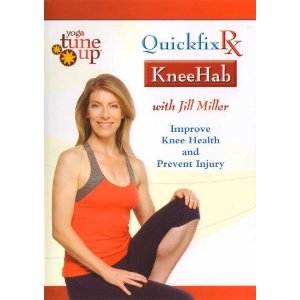
I was reading a Yoga Journal review about Jill Miller’s Kneehab video and decided to go ahead and order it but didn’t give much credence to ordering this. Her Kneehab video is divided into 5 parts that give exercises, poses and moves for people that are just recovering from surgery to seasoned athletes. Not all of the poses will be accessible if you are in a lot of knee pain and the moves are designed to help you progress, stretch and strengthen and you will be able to start doing more of the moves. After doing a few of the segments for about a week, I woke up in the morning and my knees were not on fire. ( I don’t know why but my knee pain was always the worst first thing in the morning)
I started to do the moves every day and each day my knees were yelling at me less and getting quieter.
So I decided to order her DVD for upper body pain. This DVD is divided into 5 segments specifically for pain in different parts of your body such as your neck, shoulders, hands, wrists and back. The segments range from 5-10 minutes so they are very easy to fit into your day. I actually do some of the moves when I am watching tv or on the toilet (am I sharing too much again?) I found that my pain and tightness had gone down considerably. I have been teaching many of these sequences in my yoga classes and love seeing the look of relief and delight on my students faces when they are able to manage their own health through these moves.
Even though it is called Yoga Tune Up it actually feels more like a yoga-flavored physical therapy session. So if your primary purposes is to have a more traditional yoga practice with the emphasis on meditation, mindfulness and breathing then this is not the tape for you. If your primary purpose is to find a very-low cost way to find your own relief from neck, shoulder, hand, wrist or knee pain and you are willing to make your health and body a priority in your life (you are going to have to carve out time to do these moves on a regular basis) It’s less time to do this tape then to have to see a acupuncturist, chiropractor or physical therapist though a few times a week.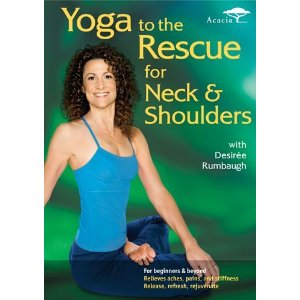
I had also bought a few years ago Desiree Rumbaugh’s Yoga to the Rescue for Neck and Shoulders and that does have a more flow-y and yoga-like but I did not get a significant or long-lasting relief with it. I do love how she shows how to do the pose the right way and she also shows the (very common) wrong way to do some traditional yoga poses.
I actually plan on going to some of her seminars in Boston ( driving 6 hours each way) so I can become more of an expert in Yoga Tune Up and help other people find an escape from chronic physical pain that they can manager themselves. I love to empower people so they can take charge of their own health.
The poses, sequences and routines of the Yoga Tune Up Program are designed to stretch, strengthen and heal from head-to-toe. With a focus on finding your body’s “blind spots” – areas that have become weakened due to overuse, underuse or misuse, and are now prone to pain and injury – these specialized routines will help balance out your entire physiology.
by Jasmine | Jun 1, 2014 | Alternative Health

Grilled peaches: A lazy cook’s dream.
The sugar-plus-heat combination makes for a seductive caramelizing effect. Peaches are a natural for the grill, where quick cooking brings out juiciness and intensifies sweetness.
- Start with peaches that are firm with just a little give when you give them a gentle squeeze with your whole hand.
- Cut the peaches in half and pit them. You can grill entire peach halves or cut them into wedges.
- Cook peaches over a medium fire on both sides until grill marks show and peaches are tender but not falling apart.
Serve grilled peaches plain or in salads. You can also try pairing grilled peaches with cool soy yogurt or with scoops of soy or rice-milk ice cream.
—
by Jasmine | Aug 22, 2012 | Alternative Health, Beginner Yoga, Reviews, Yoga DVDs, & Podcasts, Yoga Teacher training
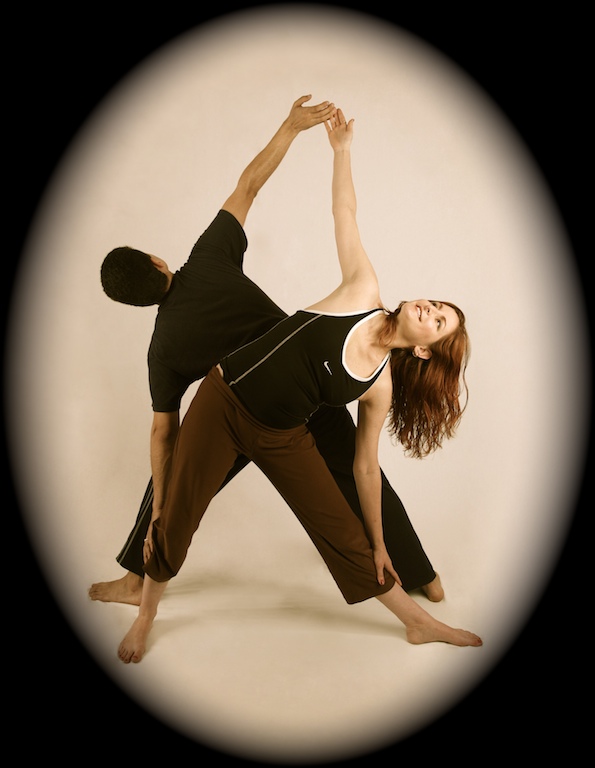 Anyone else out there taken Gary Kraftsow’s Viniyoga? I’ve been doing this at home the last few days with his DVDs. I like the pace, simple but descriptive enough instructions. He also gives an in-depth anatomy and bio-mechanics. He also has all kinds of graphics about anatomy and the body. It’s a lot of yoga, instruction and education on one DVD. There are actually a few practices on each DVD. For example, I have been watching the Yoga for Low Back Pain DVD and there is a sequence just for low back pain and sciatica, a sequence for hip pain and also a strength building sequence for low back pain and hip tightness.
Anyone else out there taken Gary Kraftsow’s Viniyoga? I’ve been doing this at home the last few days with his DVDs. I like the pace, simple but descriptive enough instructions. He also gives an in-depth anatomy and bio-mechanics. He also has all kinds of graphics about anatomy and the body. It’s a lot of yoga, instruction and education on one DVD. There are actually a few practices on each DVD. For example, I have been watching the Yoga for Low Back Pain DVD and there is a sequence just for low back pain and sciatica, a sequence for hip pain and also a strength building sequence for low back pain and hip tightness.
Yoga master Gary Kraftsow developed protocols for a recent National Institutes of Health-sponsored study of treatment for back pain. This two-DVD series is based on this work and on his 30 years of experience as a yoga therapist. The detailed instruction, gentle repetitive movements, and focus on moving with awareness and the breath make these ideal practices for a wide range of people, including those who may not have pain but can benefit from strengthening and stabilizing their backs.
Yoga Therapy for the Low Back, Sacrum & Hips
There is also a more detailed practice workshop on there but the pace is slower and he is more explaining how to do the pose, which means he only shows how to do the pose on one side so you can’t follow the flow of it since you are left to your own devices to do the pose on the other side. That’s fine if you want very detailed instructions on how to do each movement but it’s not as flowy if you just want to do the practice.
He has quite a few poses where you are kneeling on your knees, which is fine for me. I’ve found that my very overweight students are not able to do the kneeling poses or poses where you are on all fours since that is too much pressure on your knees and for some on their wrists.
by Jasmine | Jul 13, 2012 | Alternative Health, Yoga Health
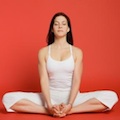
Yoga halves irregular-heartbeat episodes
Don’t you just love seeing more scientific evidence from the medical establishment about how yoga makes your heartbeats healthier?
Yoga reduced the need for surgery, medicine with side effects for Atrial Fibrillation
Yoga, which we already know and have experience is proven to lower high blood pressure and cholesterol levels, can cut in half the risk of a common and potentially dangerous irregular heartbeat, according to a U.S. study released last week by Dr. Dhanunjaya Lakkireddy, an associate professor with the University of Kansas Hospital in Kansas City, Kansas, who led the study.
The study was the first to examine the benefits of yoga on atrial fibrillation – that is a leading cause of stroke and is most common in the elderly.
“These findings are important because many of the current treatment strategies for atrial fibrillation include invasive expensive procedures or medications with undesirable side effects,” said Lakkireddy.
He presented his research at the annual meeting of the American College of Cardiology being held in New Orleans.
On average, yoga halved episodes of the irregular heartbeat, while also dramatically reducing depression and anxiety and improving in flexibility, physical functioning, vitality, social functioning and mental health, the research found.
How has your health, mood or functioning improved since you started a regular practice?
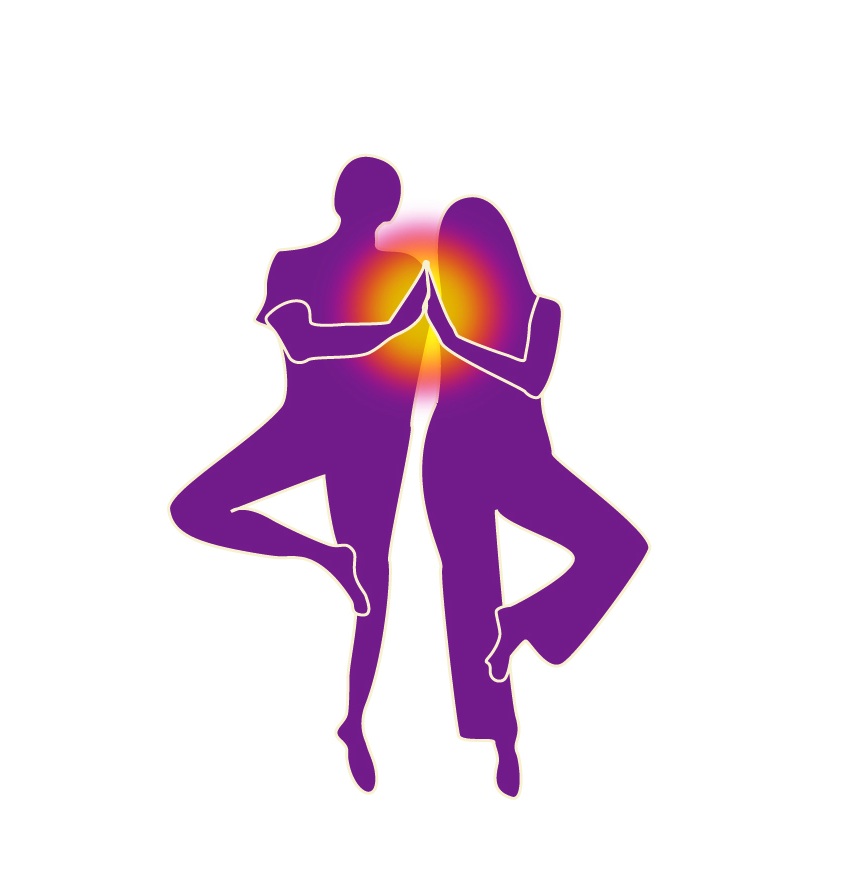




 Anyone else out there taken Gary Kraftsow’s Viniyoga? I’ve been doing this at home the last few days with his DVDs. I like the pace, simple but descriptive enough instructions. He also gives an in-depth anatomy and bio-mechanics. He also has all kinds of graphics about anatomy and the body. It’s a lot of yoga, instruction and education on one DVD. There are actually a few practices on each DVD. For example, I have been watching the Yoga for Low Back Pain DVD and there is a sequence just for low back pain and sciatica, a sequence for hip pain and also a strength building sequence for low back pain and hip tightness.
Anyone else out there taken Gary Kraftsow’s Viniyoga? I’ve been doing this at home the last few days with his DVDs. I like the pace, simple but descriptive enough instructions. He also gives an in-depth anatomy and bio-mechanics. He also has all kinds of graphics about anatomy and the body. It’s a lot of yoga, instruction and education on one DVD. There are actually a few practices on each DVD. For example, I have been watching the Yoga for Low Back Pain DVD and there is a sequence just for low back pain and sciatica, a sequence for hip pain and also a strength building sequence for low back pain and hip tightness.